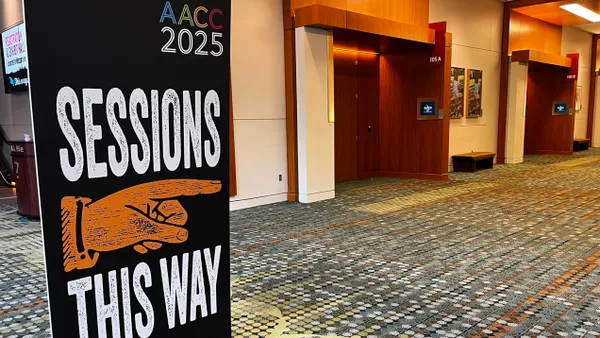This summer, we're digging into our archives for stories on current trends, challenges and opportunities in higher ed. This is our fifth installment. Read the first, second, third and fourth posts.
Growing resistance to rising tuition and questions about the value of postsecondary education have colleges in a tough spot. How can they show students and their families that a four-year degree is worth the investment of time and money, especially as noncollege alternatives proliferate?
One way is to create clearer links between what students learn in the classroom and what they'll need to know in their future jobs. Some are doing so by introducing new programs in emerging industries and technologies, such as craft beer brewing, cannabis business management and esports. Others are partnering with tech companies to develop curriculum.
Beyond that, and closer to the core of their mission, colleges are changing the way they talk about the education they offer.
That includes giving degree-seeking students the opportunity to earn badges and credentials designed to help them work in their fields sooner. Four-year colleges are also borrowing a practice from two-year and technical schools called skills mapping, which shows how their curriculum and the knowledge and abilities needed for jobs in related fields line up — something observers say could be a boon even for the liberal arts.
We examine this trend in the stories below.
Embedding certifications in degrees is gaining ground, but will the practice go mainstream?
The practice of embedding industry certifications into postsecondary curriculum is extending from the trades to white-collar professions and from two-year colleges to four-year institutions. That's giving more students the opportunity to show employers how their education will be useful on the job.
Growth has been slow and even advocates of embedding certifications acknowledge that fully integrating them at four-year institutions will be a challenge. For now, embedding is only happening at select institutions. But that could be changing. Read more.
From badges to performance reviews, here's how colleges are reinventing the Work-Study job
Earlier this year, we took a look at the state of student employment on college campuses, focusing on the Federal Work-Study program. In the final piece of our series, we examine how colleges are going beyond the constraints of that program to make campus-based student jobs better aligned with what students are learning in the classroom and what they hope to do after graduation. Read more.
With skills mapping, colleges create a 'universal language' to explain value
Colleges are under pressure to show how classroom learning aligns with the knowledge and skills employers say they need. This can be a point of contention on campus, particularly in liberal arts programs where learned "soft" skills can be more difficult to identify and convey than specific technical abilities.
Still, sources interviewed for this story said the practice of connecting curriculum to in-demand skills can help colleges explain the value of the liberal arts at a critical moment. Read more.














